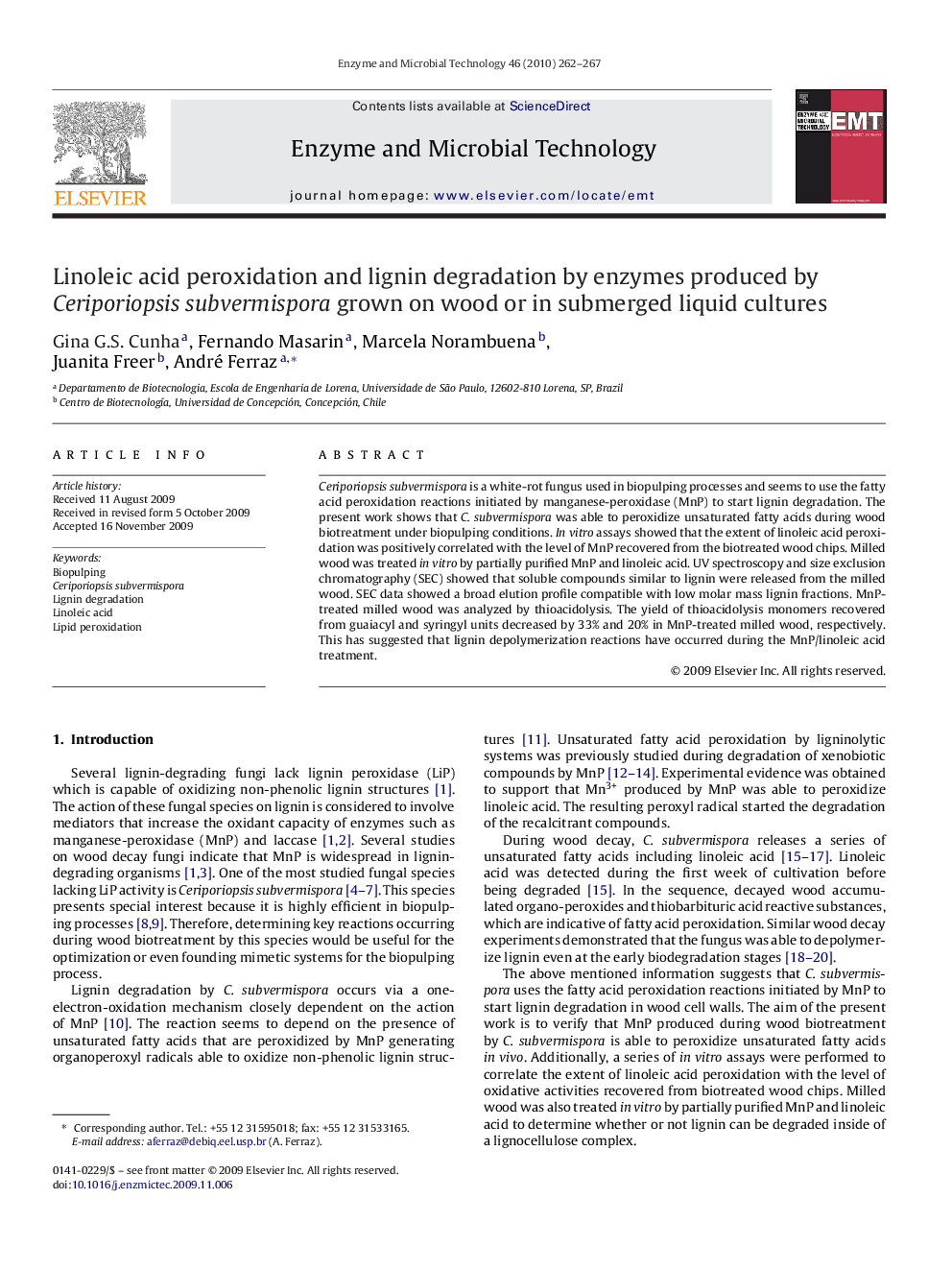| کد مقاله | کد نشریه | سال انتشار | مقاله انگلیسی | نسخه تمام متن |
|---|---|---|---|---|
| 17639 | 42686 | 2010 | 6 صفحه PDF | دانلود رایگان |

Ceriporiopsis subvermispora is a white-rot fungus used in biopulping processes and seems to use the fatty acid peroxidation reactions initiated by manganese-peroxidase (MnP) to start lignin degradation. The present work shows that C. subvermispora was able to peroxidize unsaturated fatty acids during wood biotreatment under biopulping conditions. In vitro assays showed that the extent of linoleic acid peroxidation was positively correlated with the level of MnP recovered from the biotreated wood chips. Milled wood was treated in vitro by partially purified MnP and linoleic acid. UV spectroscopy and size exclusion chromatography (SEC) showed that soluble compounds similar to lignin were released from the milled wood. SEC data showed a broad elution profile compatible with low molar mass lignin fractions. MnP-treated milled wood was analyzed by thioacidolysis. The yield of thioacidolysis monomers recovered from guaiacyl and syringyl units decreased by 33% and 20% in MnP-treated milled wood, respectively. This has suggested that lignin depolymerization reactions have occurred during the MnP/linoleic acid treatment.
Journal: Enzyme and Microbial Technology - Volume 46, Issues 3–4, 5 March 2010, Pages 262–267